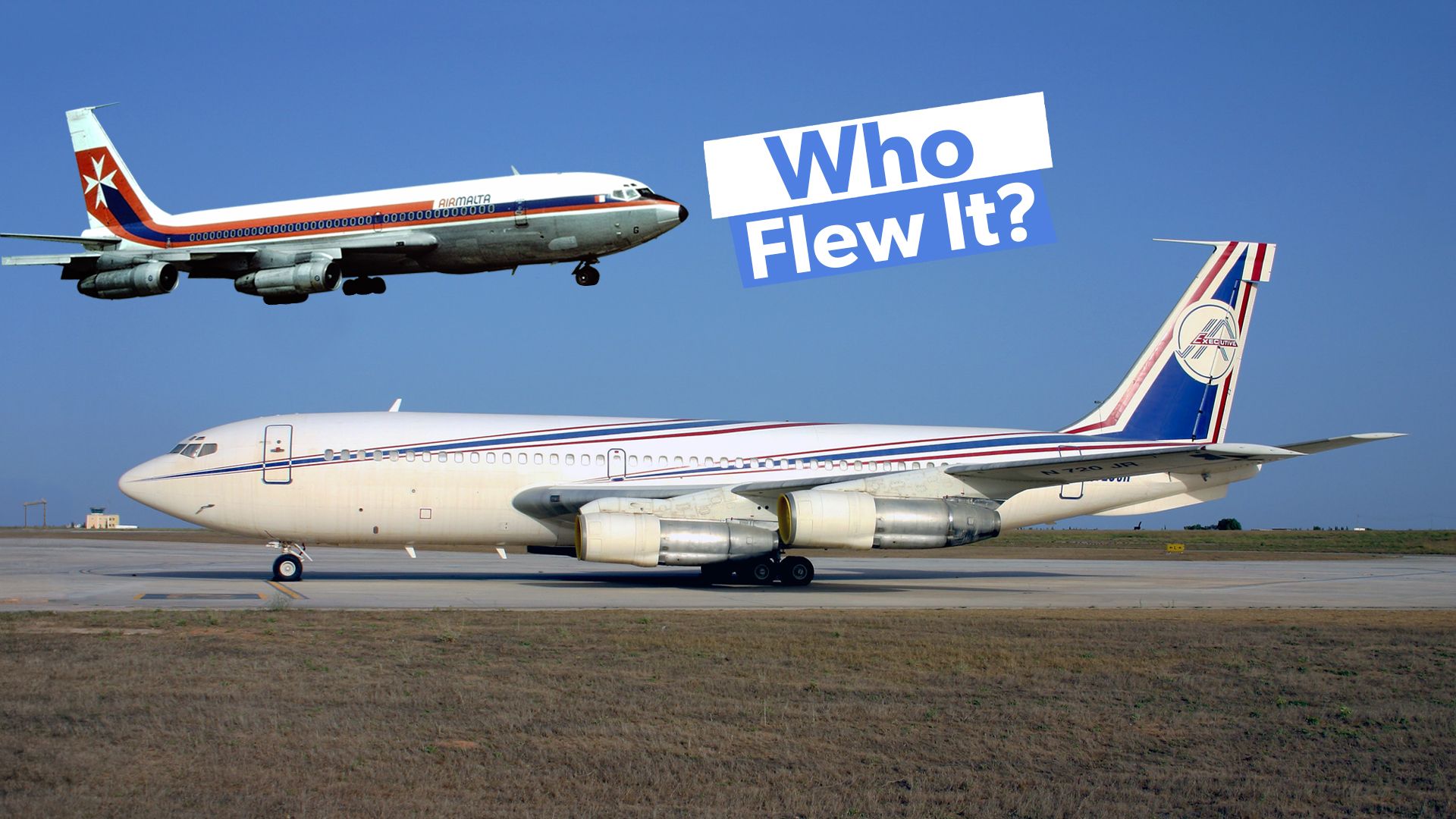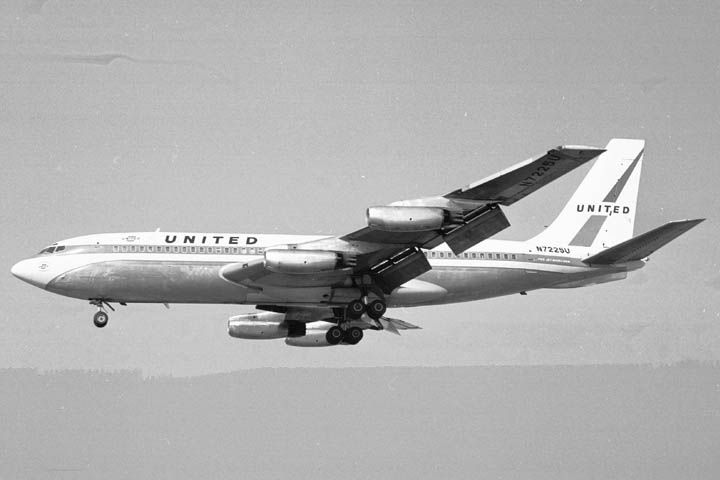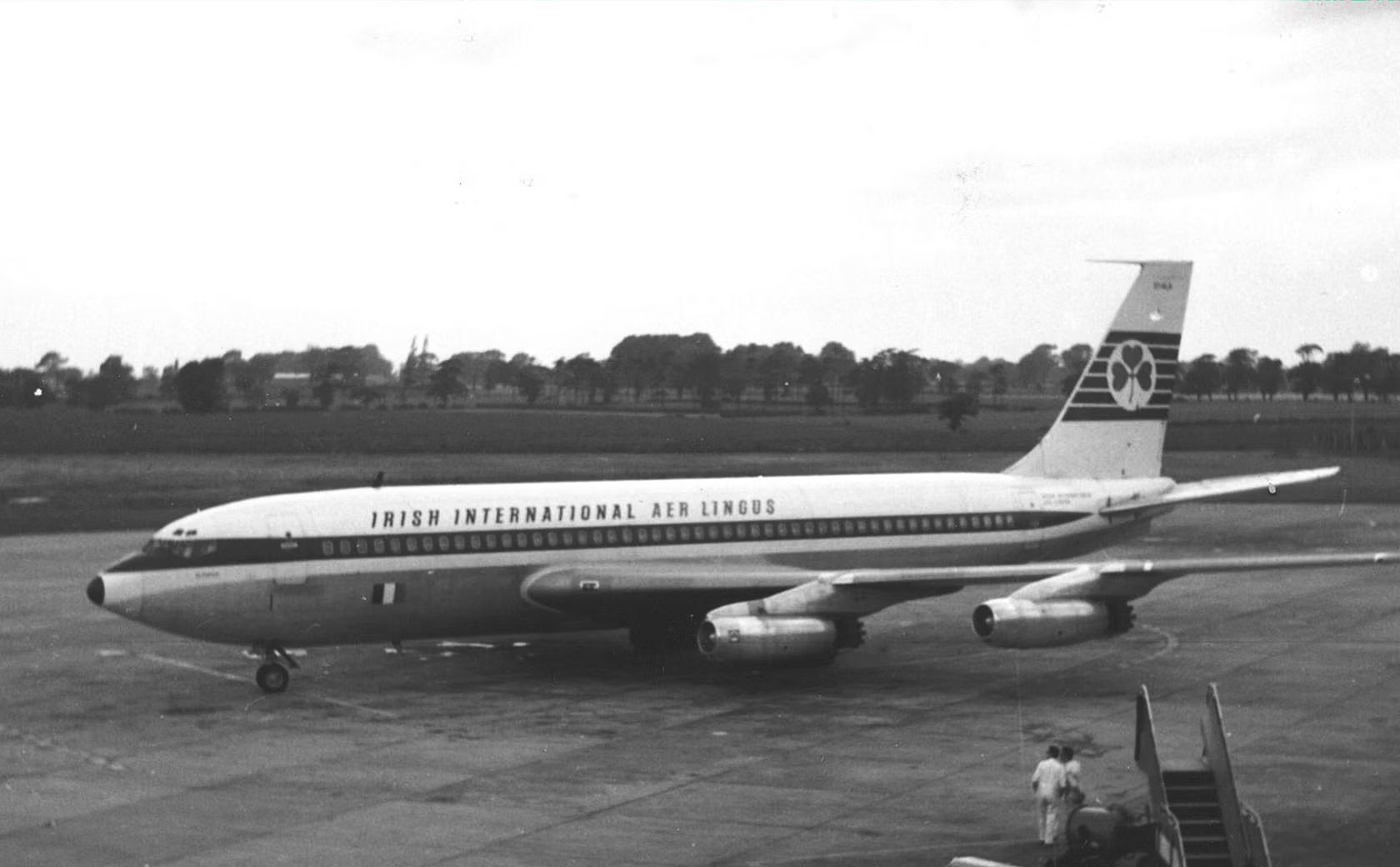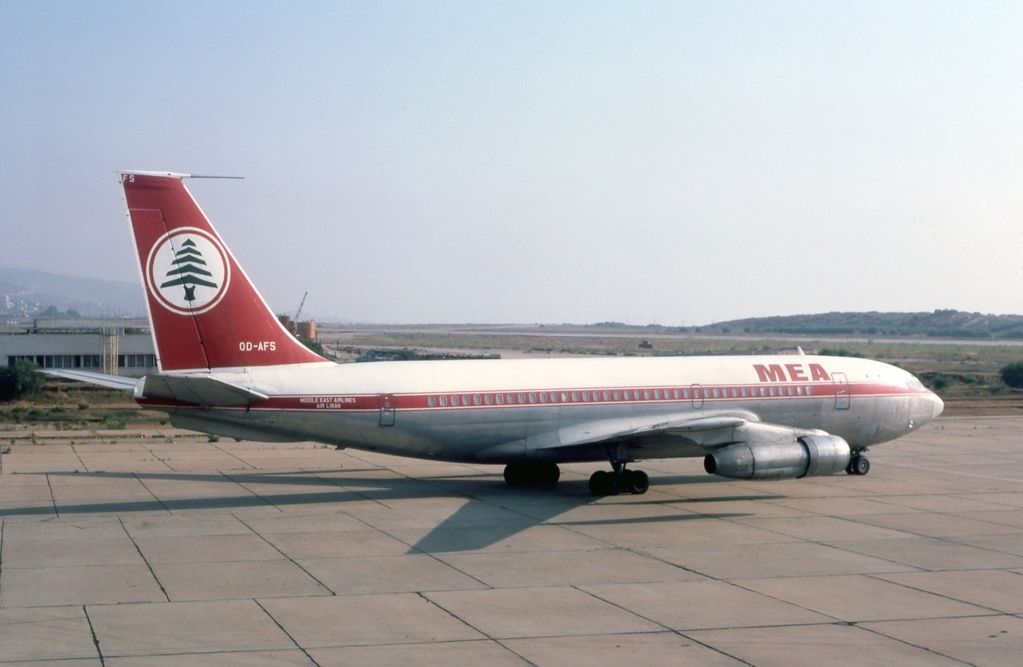Summary
- The Boeing 720 was mainly operated by major US carriers like United Airlines and American Airlines.
- Several worldwide operators, including Middle East Airlines and Lufthansa, also flew the Boeing 720.
- The Boeing 720 faced 23 hull-loss incidents, including accidents involving airlines such as Pakistan International Airlines and Ethiopian Airlines.
The Boeing 720 is a fascinating aircraft that served an extremely niche purpose during its eight-year production period. In the 1960s, many carriers sought an airplane that could balance their needs for a capacity jet like the 707 and one that could take off from shorter runways. With this rather basic concept in mind, the US manufacturer’s team of engineers set out to modify the Boeing 707 in a way that would meet these specific requirements.
The Boeing 720 was 8.3 feet shorter than the 707, and its modified wing and lightened airframe gave it a lower maximum takeoff weight. The aircraft was typically able to fly up to 3,200 miles with 131 passengers onboard in a two-class configuration. Boeing later produced the 720B variant, which was capable of carrying of flying up to 3,700 miles and carrying up to 156 in an all-economy class configuration.
Eventually, the aircraft was completed and hit the market just a few years later, in 1960, entering service with US-based legacy carrier United Airlines. In the end, however, the aircraft’s sales were relatively underwhelming, with only 154 of the type ever being completed. In this article, we will examine which carriers ordered and eventually operated the small quadjet.
Major US airlines
While Boeing’s 720 saw service with carriers across the globe, the vast majority of its commercial operations were performed in the United States. Several US legacy carriers ordered and eventually put the quadjet into commercial service.
Unsurprisingly, launch customer United Airlines played a significant role in the development and entry to service of the Boeing 720. Between 1960 and 1962, Boeing delivered 29 examples of the 720 to UA, all of which eventually entered commercial service with the airline.
Another major US carrier that ordered the quadjet was American Airlines. In 1960, Boeing delivered ten units of the original Boeing 720 model to the airline, with an additional 15 of the plane’s 720B variant delivered in 1961. Later, in 1961, American Airlines would go on to have its original ten 720s converted into 720Bs to capitalize on the advantages of turbofan-powered engines.
An additional 27 examples of the Boeing 720B were delivered to Western Airlines between 1961 and 1967, and a further 13 to Northwest Airlines between 1961 and 1964. Eventually, both of these now-defunct carriers would merge into Delta Air Lines.
Other US-based operators of the Boeing 720 include Trans World Airlines, which operated four of the type, and Continental, which maintained eight aircraft in its fleet. The original Eastern Air Lines (not to be confused with the modern Eastern Airlines) also operated 15 Boeing 720 jets.
Global operators
The Boeing 720s customers weren’t just limited to carriers in the United States. Both military and civil operators across the globe flew the jet, even keeping it in service until 29 September 2010. Multiple European legacy airlines also operated the aircraft. Irish flag carrier Aer Lingus operated three of the type, while the German flag carrier Lufthansa maintained eight 720Bs in its fleet.
The jet also proved quite popular with passenger airlines across the Middle East. Lebanese Airline Middle East Airlines operated the 720B, and Israeli flag carrier El Al also utilized two examples of the type. Multiple now-defunct airlines from the region also flew the plane, with Saudi Arabian Airlines, Ariana Afghan Airways, and Pakistan International Airlines all flying the jet. Other worldwide operators of the Boeing 720 included:
- Ecuatoriana de Aviación
- Air Ceylon
- Ethiopian Airlines
- Kenya Airways.
The Boeing 720 suffered 23 hull-loss incidents during its time in service. Several of the carriers listed above were also, unfortunately, involved in some of the accidents, such as:
- Pakistan International Airlines Flight 705 – crashed on landing at Cairo International Airport (CAI) in May 1965. Of the 127 people onboard, 121 were killed, making it the deadliest Boeing 720 accident.
- Ethiopian Airlines Flight 708 – was hijacked by seven members of the Eritrean Liberation Front in December 1972. The Boeing 720 was en route to Paris, but the crew were able to turn the aircraft around and land safely in Addis Ababa. The hijackers were killed in the subsequent shootout.
- Middle East Airlines Flight 438 – was destroyed by a bomb while traveling between Beirut and Dubai in January 1976. All 81 people onboard were killed.
In 1984, one Boeing 720, registered as N833NA, was intentionally crashed in the Mojave Desert in a joint test by NASA and the Federal Aviation Administration (FAA). The aircraft, operated by remote control, was crashed as part of an experiment called the Controlled Impact Demonstration to test how an anti-misting fuel additive could help suppress fire in a real jetliner crash scenario.




